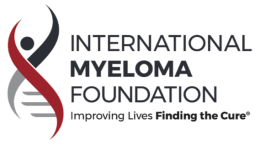Multiple myeloma can affect the bones, the red blood cells, and the kidneys. It can also affect the immune response. Compromised immune response may lead to repeated or sometimes severe infections. In this section, learn more about possible medical conditions related to multiple myeloma.
Possible Urgent Problems at Diagnosis
Some patients have urgent problems at diagnosis. The problems need medical attention before systemic therapy for myeloma begins. The following are examples of emergency medical problems:
- vertebral compression fractures
- damage to the nerves of the spinal cord
- infections
- kidney failure
- a high level of calcium in the blood
More Details About Urgent Problems at Diagnosis
- Myeloma patients may experience painful vertebral compression fractures. These fractures happen when myeloma affects the bones of the spine ( the vertebrae). The spinal cord runs through the vertebrae. (See the IMF publication Understanding Treatment of Myeloma-Induced Vertebral Compression Fractures.)
- Myeloma tumors (plasmacytomas) may grow in the vertebrae. These tumors can press on spinal nerves. If this occurs, compression of motor nerves may cause paralysis.
- Hypercalcemia is a high level of calcium in the blood. Myeloma patients may experience this condition when bones break down and release calcium.
- Both hypercalcemia and high levels of monoclonal protein in the blood can affect the kidneys. As a result, myeloma patients may have kidney failure.
- Multiple myeloma impairs the immune response, sometimes resulting in severe infections. (See the IMF publication Understanding the Immune System in Myeloma.)
Effects in the Bone Marrow
- All the blood cells — white blood cells, red blood cells, and platelets — are made in the bone marrow. When myeloma grows in the bone marrow, the body produces fewer blood cells. Anemia, a low level of red blood cells, is an early and common sign of multiple myeloma.
- Cells in healthy bone marrow maintain our skeletons. They do this by an ongoing, balanced process of bone breakdown and bone build-up. Multiple myeloma cells in the bone marrow do both of the following:
- stimulate the cells that break down bone (osteoclasts)
- suppress cells that build new bone (osteoblasts).
Bone pain, fractures, and the release of calcium from the bones into the blood may result.
Effects Outside the Bone Marrow
Myeloma cells secrete monoclonal protein into the blood. The presence of this M-protein in the blood can cause tissue damage at distant sites. Monoclonal protein builds up in the tubules of the kidneys can cause kidney damage.
- Monoclonal protein can also interfere with blood clotting and/or circulation.
- Monoclonal protein can affect nerve tissue and cause peripheral neuropathy: numbness, tingling, or pain in the hands and feet.
CRAB Criteria: Medical Problems Related to Myeloma
| Effects of Increased Myeloma Cells in the Bone Marrow CRAB criteria |
Cause | Impact on Patient |
|---|---|---|
| C - Increase in blood calcium | Release of calcium from damaged bone into bloodstream. |
|
| R -Renal problems in kidney damage | Abnormal monoclonal proteins produced by the myeloma cells are released into the bloodstream and can pass into the urine and produce kidney damage. High blood calcium, infections, and other factors can also cause or increase the severity of kidney damage. |
|
| A - Anemia | Decrease in the number and activity of red blood cell-producing cells in the bone marrow. |
|
B - Bone Damage
|
The myeloma cells activate osteoclast cells, which destroy bone, and block osteoblast cells, which normally repair damaged bone. |
|
| Additional types of organ dysfunction | Local or systemic effects of myeloma, other than CRAB features. |
|
| Abnormal immune function | The myeloma cells reduce the number and activity of normal plasma cells capable of producing antibodies against infection. |
|
What's Next?
For myeloma patients, tests are used for diagnosing your disease, discovering the type of myeloma you have, staging the disease, and monitoring your response to treatment.
What Is Multiple Myeloma?
The International Myeloma Foundation medical and editorial content team
Comprised of leading medical researchers, hematologists, oncologists, oncology-certified nurses, medical editors, and medical journalists, our team has extensive knowledge of the multiple myeloma treatment and care landscape. Additionally, Dr. Brian G.M. Durie reviews and approves all medical content on this website.
Last Medical Content Review: June 6, 2021









